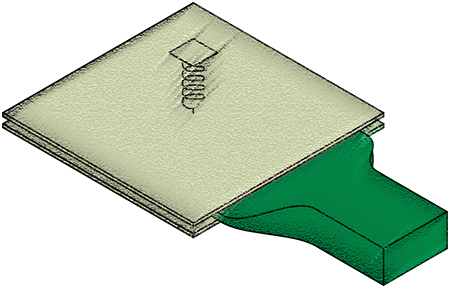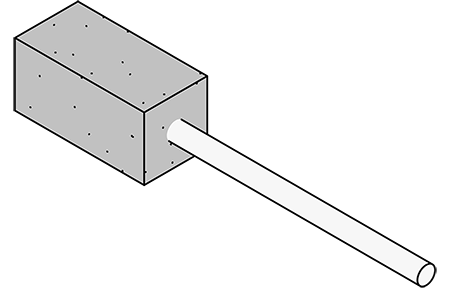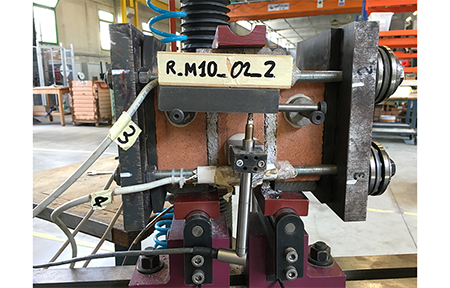Configurational Forces

Abstract
With a loose reference to problems of penetration in biomechanics (for instance, a penetrating through a cell’smembrane or a cell sucked with a pipette), the role of configurational forces is investigated during the process in which a compliant intruder is inserted into an elastic structure. For insertion into a rigid constraint, a configurational force proportional to the square of the strain needed to deform the body, which is penetrating, is found. This force has a more complex structure when the compliance of the constraint is kept into account, but in all cases, it tends to expel the penetrating body.
Related papers:
Galerkin Method for Stepped Structures

Abstract
In these studies we investigate the free vibrations of stepped structures and present two versions of the Galerkin method. Firstly, we apply the straightforward Galerkin method, where the Galerkin procedure is performed in each subdomain of the structure. Secondly, we present the rigorous realisation of the Galerkin method, where structural parameters such as stiffness and mass are treated as generalised functions over the entire domain. This advanced approach uses unit step functions, the Dirac delta function and its derivative to account for changes in structural parameters between steps. Importantly, the rigorous implementation leads to additional terms that are not present in the simple version of the Galerkin method. Both versions of the Galerkin method are compared with exact solutions for the problems analysed. As the number of terms in the expansion increases, the rigorous Galerkin method converges to the exact solution. In contrast, the 'naive' realisation of the Galerkin method commonly used in the literature does not show this convergence. These studies highlight the need for careful consideration when implementing the Galerkin method for stepped structures, and emphasise the importance of using the rigorous version for more accurate results.
Related papers:
KISADAMA

Abstract
The objective of the KISADAMA project is to develop an integrated approach for modelling and analysis of the decay mechanism of masonry structures (made by fired clay or sandstone brick) due to salt crystallization. In particular, the idea is to combine, at the (sub)micro-scale, theoretical, numerical and experimental studies to model the interaction between salt crystallization and deformation/damage of the masonry porous material and, then, to pass this information at the macro-scale, in order to develop effective predictive tools useful from the engineer point of view. In this way, a deep understanding of the crystallization processes can be achieved and future damage scenarios can be predicted.
Related papers: